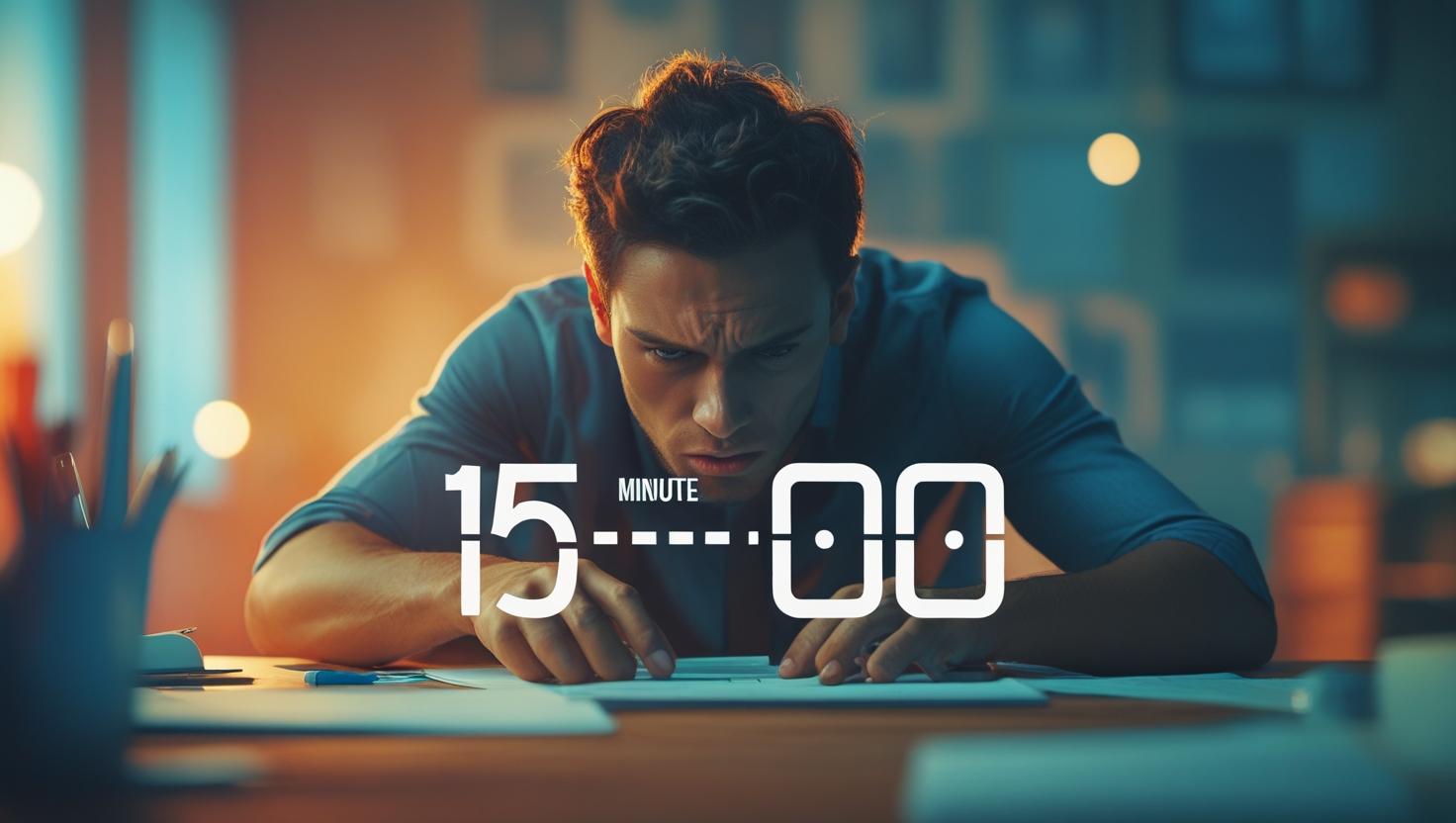Why the 15-Minute Timer Rule Is the Secret to Beating Procrastination

Why the 15-Minute Timer Rule Is the Secret to Beating Procrastination
Every organizer whether running a global conference, a high-stakes board meeting, or a webinar with hundreds of registrants faces the same enemy: procrastination. The bigger the task, the more overwhelming it feels, and the more tempting it is to delay. That’s where the 15 Minute Timer Rule comes in.
By simply setting a timer on for 15 minutes, you trick your brain into starting without the weight of “finishing everything.” It’s small enough to feel manageable, yet long enough to create momentum. In productivity psychology, this rule is a proven way to build focus, defeat inertia, and deliver results.
And for teams managing live events, this principle goes beyond personal productivity. With solutions like Let’s Time IT, you can scale this concept into real-world countdown timers for sessions, speaker slots, rehearsals, and backstage operations all discreetly managed and synchronized.
Whether you need to set timer for 15 minutes to kick off a task or schedule session timers across a three day summit, this simple framework becomes a powerful weapon against wasted time.
Why Procrastination Strikes in Event Planning
Event and conference professionals often juggle:
- Speaker onboarding
- Venue coordination
- Sponsor commitments
- Marketing deadlines
- Audience engagement
These tasks pile up, making it easy to stall instead of starting. The 15-minute approach cuts through overwhelm because it:
- Reduces decision paralysis – You only commit to 15 minutes, not the entire project.
- Builds momentum – Once started, most people naturally continue beyond the timer.
- Creates structure – When every session backstage runs on tight timing, micro-deadlines reduce chaos.
For organizers, it’s not just about avoiding procrastination, it’s about keeping hundreds (sometimes thousands) of moving parts aligned.
The Science Behind the 15-Minute Rule
Psychologists call it the Zeigarnik Effect: the brain doesn’t like leaving tasks unfinished. By using a timer set for 15 minutes, you create a natural starting point that triggers this effect.
Additionally:
- Short bursts reduce stress. Event managers already face high-stakes deadlines. Knowing you only need to focus for 15 minutes lowers anxiety.
- Time-boxing boosts focus. You minimize distractions when a visible countdown is ticking.
- Momentum creates flow. Most people go beyond the initial 15 minutes once engaged.
For event teams, this principle translates into practical backstage efficiency, short preparation bursts, last-minute coordination, and timed rehearsals that don’t eat into larger schedules.
Applying the 15-Minute Rule in Events and Webinars
Here are specific use cases where the 15-minute timer rule becomes invaluable for organizers:
1. Pre-Event Planning Sprints
Instead of staring at a massive checklist, dedicate 15-minute bursts to high-priority tasks like reviewing speaker slides or drafting invites.
2. Speaker Rehearsals
Run controlled 15-minute practice slots for speakers. This helps them sharpen delivery while ensuring you don’t overshoot rehearsal time.
3. Session Management
In conferences, a timer for fifteen minutes can signal a transition point Q&A sessions, sponsor spotlights, or coffee breaks.
4. Webinar Engagement
Encourage attendees to stay engaged in 15-minute chunks polls, breakout rooms, or micro-learning bursts.
5. Backstage Coordination
Use remote-controlled countdown timers (powered by Let’s Time IT) to discreetly manage greenroom communication, giving speakers clear signals without disrupting flow.
Scaling the 15-Minute Rule with Let’s Time IT
For individuals, a set 15 minute timer might mean opening a phone app. But for large-scale events, you need precision, discretion, and scalability.
That’s where Let’s Time IT steps in:
- Discreet Timer Scheduling – Send countdowns to speaker screens without disrupting the audience view.
- Remote Control – Trigger or reset timers across multiple sessions from one dashboard.
- Multi-Session Management – Perfect for conferences running multiple parallel tracks.
- Flexible Durations – While 15 minutes is powerful, you can also manage 5-minute warnings, 30-minute talks, or full-day timers.
- Cross-Platform Compatibility – Works seamlessly across devices, ensuring no speaker or team member misses a cue.
This means the 15-minute rule doesn’t just boost personal productivity it becomes an operational strategy for entire event ecosystems.
The 15-Minute Rule Beyond Events
While this principle is gold for event professionals, it’s also applicable to:
- Team meetings – Keep discussions short and outcome-driven.
- Marketing workflows – Dedicate 15 minutes to content drafts or social updates.
- CXO decision-making – Use timers to avoid endless debates.
Ultimately, the 15-minute timer rule creates a culture of urgency and action across any organization.
Common Mistakes to Avoid
- Overusing timers – Don’t time-box every task; use it strategically.
- Ignoring transition signals – If the timer ends, act immediately don’t let sessions drag.
- Not syncing across teams – Use centralized platforms like Let’s Time IT to ensure consistency.
Conclusion: Small Intervals, Big Results
Beating procrastination doesn’t require massive willpower, it requires a system. The 15 minute timer rule is simple, practical, and scalable.
For individuals, it means getting started. For event, meeting, and webinar organizers, it means precisely managing time across speakers, sessions, and backstage operations.
And with Let’s Time IT, you can move beyond the personal timer app and bring structured time management to your entire event ecosystem discreetly, efficiently, and at scale.
Next time you hesitate on a task, just set timer for 15 minutes and start. You’ll be amazed at the momentum it creates.